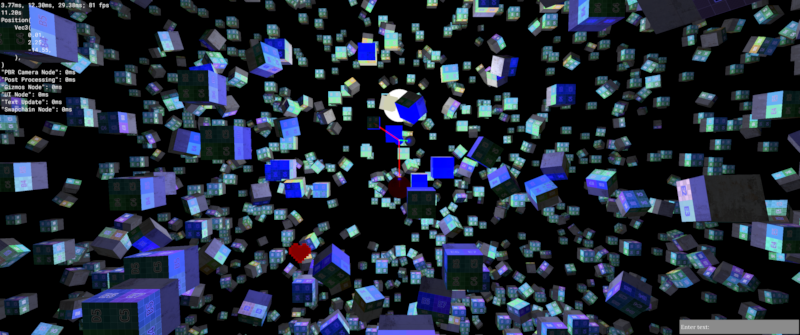3 releases
| 0.10.3 | Jan 17, 2022 |
|---|---|
| 0.10.2 | Jan 8, 2022 |
| 0.10.0 | Jan 8, 2022 |
#1657 in Game dev
Used in ivy-physics
215KB
5.5K
SLoC
Ivy
What it is
Ivy is a modular application and game framework for Rust.
This crate provides an amalgamation and rexport as well as aliasing for the
multiple ivy crates.
Guide
A user guide is provided to quickly familiarize the user with the basic usage of the engine.
Features
- Vulkan high level rendering
- PBR rendering and post processing
- Rendergraph abstractions
- Collision detection and realistic physics response
- ECS driven architecture
- Deferred dynamic events using observer pattern
- Ray casting for arbitrary convex shapes
- Handle based dynamic storage
- Input system with composeable vector generation
- UI system with configurable widget and positioning system
- ... And more
Gallery

How it works
Layers
The core of the program is an application. [core::App]. It defines the
update loop, and event handling.
From there, logic is extracted into layers which are run for each iteration. Within a layer, the user is free to do whatever they want, from reading from sockets, rendering using vulkan, or dispatching ECS workloads.
Due to the layered design, several high level concepts can work together and not interfere, aswell as being inserted based on different configurations.
Layers can be thought of as plugin in high level containers of behaviour.
The existance of layer allow importing of behaviour from other crates without concern of implementation details.
Inter-layer communication
The application exposes different ways in which two layers can influence each other.
worldcontains the ECS world with all entities and components.resourcesis a typed storage accessed by handles. This is useful for storing textures, models, or singletons that are to be shared between layers and inside layers with dynamic borrow checking.eventsfacilitates a broadcasting channel in which events can be sent and listened to. Each layer can set up a receiver and iterate the sent events of a specific type. This is best used for low frequency data to avoid busy checking, like user input, state changes, or alike.
See the documentation for [core::Layer]
Dependencies
~12MB
~284K SLoC